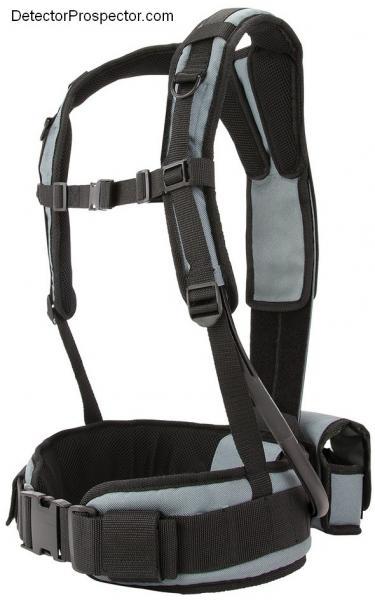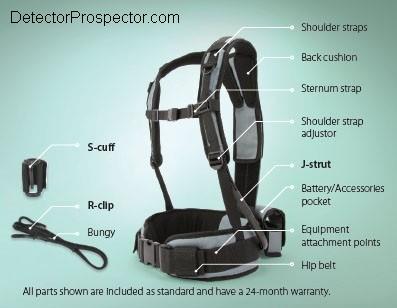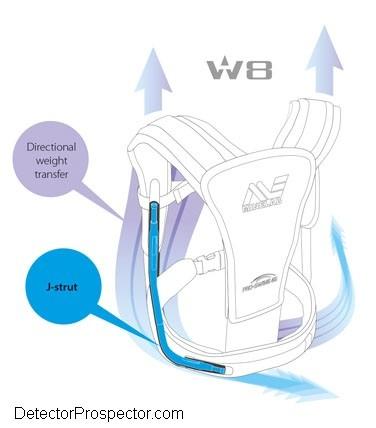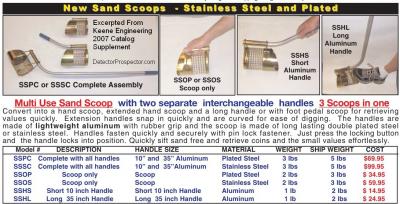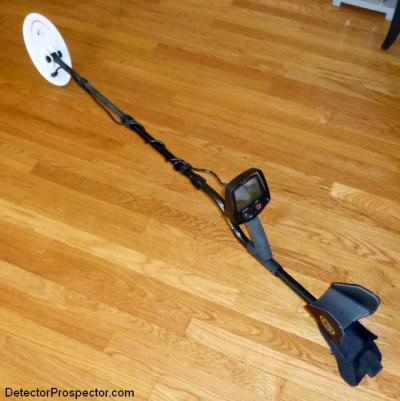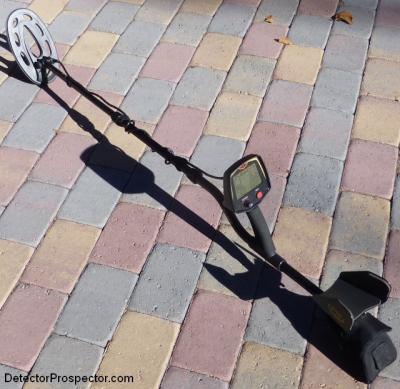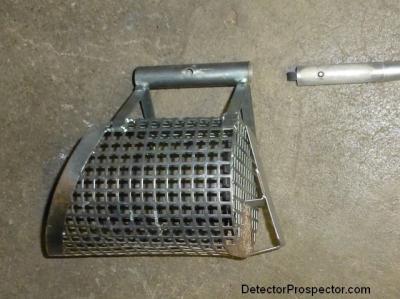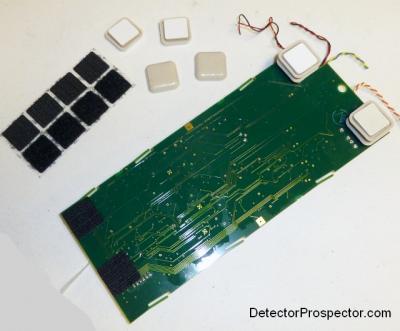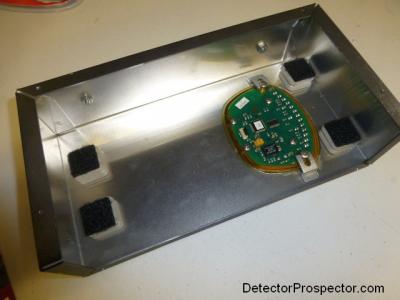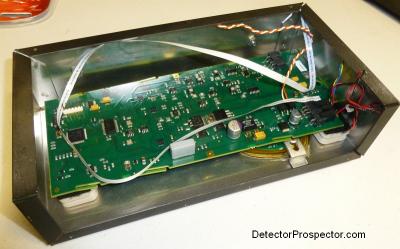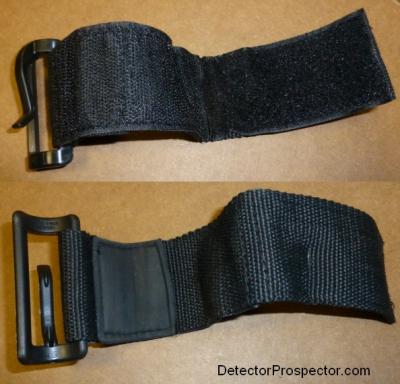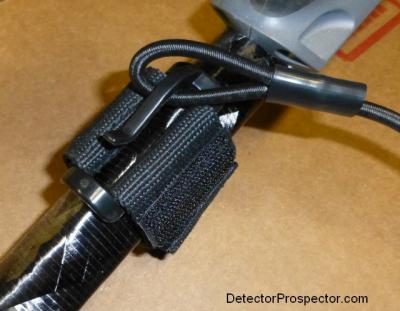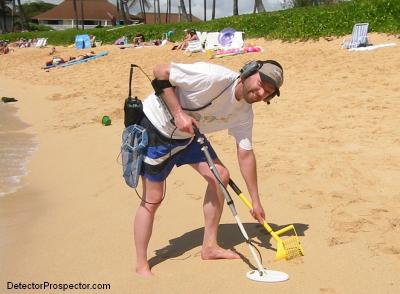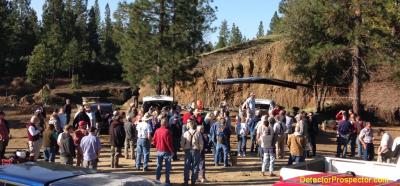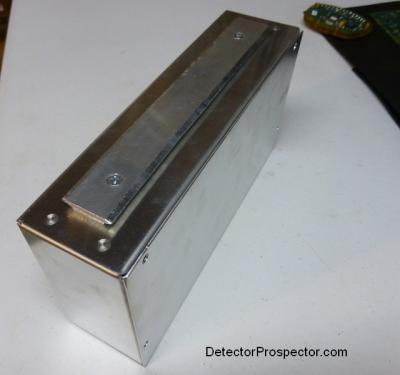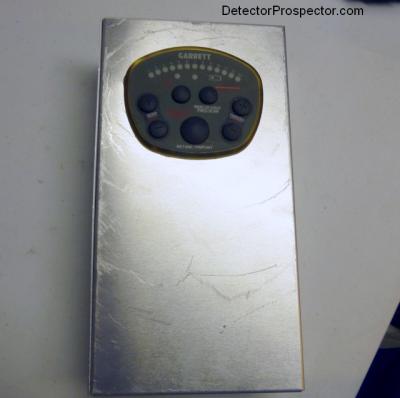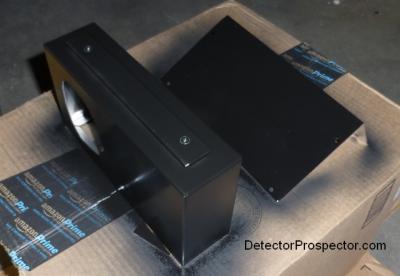-
Posts
19,754 -
Joined
Content Type
Forums
Detector Prospector Home
Detector Database
Downloads
Everything posted by Steve Herschbach
-
Happy to, I wanted to see what it looked like. Reminds me of my Infinium 14" x 10", nice looking coil. If you get the chance, can you get an exact weight on it for us? I do not trust published weights. I have actually heard of manufacturers excluding the cable weight, as if that is not part of the coil.
-

Minelab SDC 2300 Bungee Attachment
Steve Herschbach replied to ~LARGO~'s topic in Minelab Metal Detectors
Hi Rick, The Pro-Swing 45 is an excellent harness and a good investment for anyone who has issues with detector weight. It will work with any model detector. That said, it is not that different than what comes with a GPX 5000 with the addition of a support strut so you really are already familiar with what it is like. The Pro-Swing is improved but not all that different except that it does borrow the Hip Stick concept of transferring the weight from shoulder to hip via a strut integrated into the design. I am glad I got one since I sold my GPX harness with my GPX. The Pro-Swing works great with my ATX. The battery pouch on the back intended for a GPX battery is removable. Manufacturers website http://www.minelab.com/usa/products/consumer/accessories-1/harness-1/pro-swing-45 -

VLF Concentric Vs DD Coils
Steve Herschbach replied to Steve Herschbach's topic in Metal Detector Advice & Comparisons
Back on the old AMDS Adventure Forum Jim Hemminway and I discussed the DD vs concentric option for the F75. Jim eventually got the concentric and made a great report, which I am reproducing here. Jim Hemmingway 08-18-2011 Hi Steve… Yep, I recently I bought a 10” elliptical concentric coil for my basic F75. I was curious to see how the 10” concentric would perform over my ground [ Fe3O4 = 0.3% Ground Phase = 85ish ] compared to the stock 11” DD coil, with a view to prospecting applications where possible. I also wanted to compare its vulnerability to EMI. As you know, concentric coils of similar size to DD coils are noticeably less vulnerable to EMI, but are more susceptible to ground minerals. More important, concentrics improve sensitivity to smaller targets if ground minerals permit. That said, many prospecting areas have a ground mineral magnetic strength such that DD coils of similar size improve ground mineral penetration over concentric coils. BTW Steve, mentioning these generalities is directed at readers following along, and certainly not at you. The 11” stock DD measures roughly 7 ½” by 11 ½” compared to the concentric elliptical at 5 ½” by 9 ¾”…quite a difference looking at them side-by-side. Aside from anything else, the smaller coil will slightly improve maneuverability in tight places between rocks… yet still provide comparatively good coverage. I don’t leave for prospecting for two weeks yet, so the information presented below is based on checking out targets in the patio test garden where EMI is quite high at this time of year. Not real world conditions, as these are disturbed ground targets where we can expect somewhat less by way of depth and more erratic target ID responses… with most non-ferrous targets beyond a few inches depth either residing in the iron range or all over the map. Despite those factors, we can still conduct meaningful, relative side-by-side depth / sens comparisons. Below follow some observations… (a) F75 Test Results In the highly sensitive discriminate JE mode set to small iron elimination (12 or 13)…I saw no discernible difference in depth results over copper pennies down to 10 inches. I felt there was a very slight decrease in signal strength over the 10” Canada nickel but it wasn’t much. Solid lead “nuggets” at 2.2 grains, 4.5 grains, 0.5 grams all buried at three inches and a 1.0 gram solid nugget at four inches all responded with similarly good solid signals, with a slight improvement over the 11” DD on the smaller nuggets. All test nuggets were solid “can’t miss ‘em” signals. JE discrimination mode, for those unfamiliar with this unit, delivers an audio boost [for lack of a more suitable description ] to its signals compared to the more modulated all-metal mode, and this is quite evident on small nuggets and larger deep targets. It leads some users to believe it goes deeper than the all-metal motion mode, but that is not the case and particularly not so as magnetic ground mineral strength increases. In the all-metal motion mode the signal response was stronger and more distinct compared to the stock 11” DD over all targets including a 10” nickel. The signal strength improvement was most profound on the two smaller nuggets and to a lesser extent on the 10” nickel. There was no measurable target ID improvement over iron targets because these pretty much ID as iron with the 11” DD in this testbed, as mostly do non-ferrous targets beyond a few inches depth. Instability from EMI sources was only marginally reduced in JE discriminate mode but more significantly reduced in the all-metal motion mode. That surprised me. It certainly was not reduced by nearly the same magnitude as occurs with the smaller 6” elliptical concentric. But in all-metal motion mode it made the difference between running the unit at max sensitivity (99) with a bit of low level chatter as compared to reducing the sens level to 80 for an equivalent chatter level when using the stock DD coil. This may not sound like much, but it represents the difference between hearing faint signals or missing them altogether. I was pleased by these results. Some were anticipated, but I did not anticipate the depth results or the crispness of the all-metal motion mode signals on all targets in this ground. ( Comparison to Goldbug2 At the time I was running these tests, I was thinking that the Goldbug2 also uses elliptical concentric coils. They are very effective over this ground, surprisingly so on small shallow targets but comparatively less effective on deeper nuggets and nickels than is F75. But then…that is a result of high operating frequency over fairly mineralized ground. I ran some comparisons between these units and identical size coils…both the 6” and 10” elliptical concentrics. I should mention here that the F75’s 5” DD coil performs similar to the 6” concentric elliptical on depth /sens to both small nuggets and larger deeper targets such as nickels, although my in-ground tests indicate the 6” elliptical has a slight advantage on small stuff in this ground. Both units were initially adjusted to max sensitivity and GB2” was tested in both Normal and Low Mineralization modes. Of the two modes, Low Mineral mode …a slower autotune rate… gave the best signals overall, so that’s what I used for the comparison. The GB2 audio boost feature was not used in these tests. It dramatically enhances signals, but it was not used in these tests because it is not possible to hunt mineralized ground here at max sensitivity and with that feature turned on. It results in constant annoying false ground signals with slight changes in coil elevation over the ground. The F75 threshold was set to “0”…one détente step above minus (-1) one…barely audible… with audio pitch set to mimic the Goldbug2’s audio pitch more closely…at least for my hearing. The Goldbug2 does not see a 10” nickel with the 6” elliptical coil and barely detects it with the 10” elliptical. The F75 delivers a modest but solid signal with the 10” coil and a light signal over it with the 6” coil. F75 gives a much stronger signal than Goldbug2 over 6” and 8” nickels regardless which coil size is compared. The F75 delivers a stronger signal on each of the small nuggets described above regardless whether the 6” or 10” elliptical concentric coils are compared…and this is even more pronounced when comparing the 10” coils. Both units respond quite well to the nuggets, but the F75 has a very decided edge in signal strength. With these results in mind, I buried a 1.1 grain lead nugget at an estimated one-and-a-half-inches and a half-grain lead nugget at an estimated half-inch depth and no less. Comparing the small coils, the Goldbug2 delivers a much more discrete signal on the 1.1 grain nugget from any sweep direction than does F75, making it easier to hear. Both units signal modestly over the 0.5 grain nugget, but the F75 delivers a louder, easier-to-hear signal. Comparing the 10” coils, both units signal lightly on the 1.1 grain nugget, but Goldbug2 gives a more discrete signal. Both units signal better over the 0.5 grain nugget but again the F75 delivers a louder easier-to-hear signal than does Goldbug2. To put an accurate spin on these results, overall the Goldbug2 has the edge on these tiny nuggets… but it’s a very close thing. As a separate point, the Goldbug2 signals on these tiny nuggets even with the sensitivity reduced down to a setting of 5ish on a scale of 0 to 10. The F75’s sensitivity could not be reduced nearly so much…say about 90ish on a scale of 0 to 100…before it effectively loses these tiny nugget signals. F75’s sensitivity to these tiny nuggets is highly gain-dependent. The comparison between these units comprises many tests over several weeks. All testing was done wearing NuggetBuster headphones with the volume set to the same level by using the “clicks” on the volume control. Signal strengths and gain levels needed to hear them sometimes changed slightly on different days but in a relative sense remained the same. High residential EMI is the culprit, as no rainfall was experienced during that droughty period in July. Something readers should keep in mind is that the F75 is more vulnerable to high residential EMI increasing background chatter compared to Goldbug2 at max sensitivity settings used in these tests. This makes it more difficult to hear weak signals from these tiny nuggets. That will change when searching prospecting environs away from EMI sources. By comparison here, the Goldbug2 is much, much less vulnerable to EMI, a result being that even the weakest signals are easier to hear against it’s very quiet, smooth threshold hum. Don’t underestimate the effect of EMI. It can really reduce air test depths compared to in-the-ground depths and that does not just apply to PI units. No meaningful comparison was done in discrimination mode over any of the targets. The GB2 iron discrimination is fixed at a level slightly above small iron elimination in order to deal with hotrocks. This results in very poor, usually broken signals over most disturbed ground targets in this testbed. So, there was just no point. I can relate that using the 10” elliptical coil, the F75’s JE discriminate mode set as high as “14” will give a modest two-way signal over the 0.5 grain nugget at one-half inch… and will detect a 12” deep Jefferson nickel in this ground. Raise the discrimination setting to “15” and these targets are gone….similar to GB2 in discrimination mode. A Final Comment… It’s interesting stuff Steve, everything considered. We occasionally read reports from around the country about how different units perform over varying minerals / soil types. This is my experience over my testbed disturbed ground. The Goldbug2 performs quite well in this soil, especially the 6” elliptical coil on very tiny, shallow targets. I love that unit so much I made the effort to reinstall the box under the armcuff. Now it feels even lighter, and of course the location of the controls is permanently burned into my memory. The F75’s small nugget sensitivity is exceptional for a 13 kHz operating frequency, and this leads one to consider additional design factors that contribute to small nugget sensitivity besides operating frequency. Think what you will, but these results tell me that more extreme ground mineralization than exists here will be required to reduce the 10” concentric’s depth / sens performance on small nuggets below that of the 11” DD coil. Take care on your trip Steve and watch out for those damned snakes. I have to get packing for a two month trip, first to the Appalachians, then to northern Ontario. We'll speak with you again early next winter if not a bit sooner. Jim -

Steve H. Speaking in Reno
Steve Herschbach replied to Sourdough Scott's topic in Detector Prospector Forum
I look like I am chewing you all out! Fun time, really nice folks. Thanks Scott! -

VLF Concentric Vs DD Coils
Steve Herschbach replied to Steve Herschbach's topic in Metal Detector Advice & Comparisons
Great article! Thanks for posting the link. Timely because I just got back from speaking to the local GPAA chapter about metal detecting and that was one thing I said - use small coils! -

VLF Concentric Vs DD Coils
Steve Herschbach replied to Steve Herschbach's topic in Metal Detector Advice & Comparisons
Interesting also that the hottest machine ever made, the Gold Bug 2, only employs concentric coils. -
Keene carried them a few years ago but does not seem to any longer. Looks to have been a rare scoop as I am having a hard time finding anything exactly like it Googling around. The handle is deceptive, much stronger than it appears. This is from the Keene 2007 catalog supplement. Mine was the SSSC stainless scoop for $99.95 but I only got one handle with mine like the SSHL model. Probably a typical Keene mix up. And the photos show slightly different designs. Mine appears to be a bit stouter. I have no idea who was making the scoops for Keene or if they made them themselves.
-
VLF detectors can come with DD or concentric coils. This is similar to but not quite the same thing as DD versus mono on a pulse induction detector. There are three basic coil types in wide use, Concentric, Double D (DD) and Mono. A VLF detector transmits and receives simultaneously and so there must be both a transmit coil and a receive coil. A pulse induction (PI) detector can alternate between transmit and receive and so one coil can be employed as both transmit and receive in an alternating fashion. There is confusion on this but simply put VLF (induction balance or continuous wave) detectors do not employ mono coils. A VLF can only employ the concentric or DD options. A pulse induction coil can work with all three types. Metal detector coil types illustrated - concentric vs DD vs mono VLF detectors are more alike than different these days. One thing that can make a real difference is what coil the detector comes with. Two very similar models will be quite different if one comes with a 12" round concentric, and another an 11" x 7" DD. In this case the very same detector can be turned into two different detectors by changing coils. Here are a couple rarely seen on the F75 - the 10" x 5" DD and 10" elliptical concentric. A big difference between the Teknetics T2 and Fisher F75 was that the F75 came later and the ability to use concentric coils was added. The T2 can only use DD coils. Why DD or concentric? DD coils are all the rage these days. However, concentrics have more consistent detection patterns with less dead spots up close. Every notice how that DD coil goes wacky on shallow targets? And concentric coils are much better at identifying flat ferrous targets like bottle caps. Here it is from the guy that should know best, Dave Johnson, lead designer on the F75. About Search Coils by Dave Johnson Search Coil Field Shape by Dave Johnson Coil Basics by Carl Moreland I like the 10" DD for the solid design, better for working in stubble or other locations where an open coil might hang up. The concentric just for being better behaved. The DD is the better prospecting coil for bad ground. Concentrics do well on milder ground. A note on coils. The blade like knife edged detecting pattern depicted in DD marketing ads, and even the diagram above, is largely myth. Electromagnetic fields radiate and simple coils cannot focus them into beams. A round concentric coil has a search field shaped like a soccer ball cut in half. A similar size DD coil will have a search field more like a football cut in half lengthwise. If you ever doubt this, just fire up your detector with a DD coil, flip it over, and run a coin under the coil noting where the signal fades at different locations under the coil. This is best seen via true all metal modes, as disc modes suppress the edge signal to a large degree. But it’s there, and targets under the edge of a DD coil will mask centerline targets to a degree that would surprise most people. Finally, depth is more related to coil width than coil length. Think of a 5" x 10" coil as a stretched out 5" coil, not as a skinny 10" coil. That is why when listing elliptical coil sizes you will often see me putting the small number first. Marketers do it the other way around so you tend to think you are getting more than you are. A truer picture can be had by comparing the total area of a coil, one to the other, but for quick and dirty comparisons, comparing by width will give you a more conservative idea of comparative coil performance, than comparing by length. Fisher F75 with 10" Elliptical DD Coil Fisher F75 with 10" Elliptical Concentric Coil
-
Yes Tom, it has an angled kick plate on the back, and easy disconnect handle. It has seen a lot of use in rocky material and is barely scuffed.
-

Steve H. Speaking in Reno
Steve Herschbach replied to Sourdough Scott's topic in Detector Prospector Forum
Talking heads are boring. Got a question, just ask on the forum. That is why it is here! -

Hard Carrying Cases
Steve Herschbach replied to quinton's topic in Metal Detector Advice & Comparisons
I use a good old fashioned beat up Samsonite suitcase, the kind the gorillas tossed around in the ads. It is very boring looking and nobody would guess there is a few thousand bucks worth of electronics inside. I like it that way. Custom cases attract attention. -

Garrett ATX Strip Down & Rebuild
Steve Herschbach replied to Steve Herschbach's topic in Garrett Metal Detectors
OK, final pieces are falling onto place. I did not want to drill any more holes in the case to mount circuit board and needed to space it above installed control panel. Wandered Home Depot for some time and inspiration hit. I got little plastic pads designed to be stuck in the bottom of chair legs. Two stacked got me the proper distance. And velco stickies to made the board removeable! We sure have cool stuff these days to do almost anything. This is nice as I wanted to get board located to make final decisions on where to put controls and speaker. I can do that then pull board back out to drill final holes, etc. then put it back in. Gives me a bit of wiggle for spacing also and a shock mount effect. I like it! -

Wireless Headphones
Steve Herschbach replied to quinton's topic in Metal Detector Advice & Comparisons
It is really all about the latency issue. There are low latency Bluetooth options available these days. For people like me that need to study up on it, here is a good reference http://theheadphonelist.com/wireless-fidelity-making-sense-bluetooth-headphone-technology/ From that link: "Lag/latency – Because of the encoding-decoding steps done by Bluetooth audio devices, there can be some latency between source and headset, ranging from imperceptible to quite bothersome. It’s not a big deal for music, but causes lip-synching issues with video and oftentimes makes Bluetooth headsets unusable for gaming. As with all things Bluetooth, the severity of lag varies widely depending on hardware and software. In my experience it also seems to vary with distance, with video and audio going out of sync as the headset is moved away from the audio source. One of the versions of the aptX codec mentioned previously is designed to reduce Bluetooth latency and should be suited best for use with a TV." If you are watching TV you want the headphone to sync with movement on screen. I would think any Bluetooth headphones good enough for watching TV would do the trick. No problem at all just detecting. You may have to slow down the pinpointing a bit is all. -

Minelab SDC 2300 Bungee Attachment
Steve Herschbach replied to ~LARGO~'s topic in Minelab Metal Detectors
Here is the velcro mounted hook that comes with the Minelab Pro-Swing 45 harness. Best thing I have seen yet, holds bungee end securely yet very easy to slip bungee off detector when you need to. I would like to get more so will be checking with Minelab. I want to leave on various detectors instead of switching it around all the time. One less thing to forget that way. The alternative is make something like it. The strap is 8" x 2" but the key would be making the buckle/hook. It looks like a custom Minelab part, part number 8004-0017. -
OK, finally got that photo! Here is my beach scoop collection: The yellow one I have had the longest. It is a steel model that in theory can be a hand scoop, short handled scoop, and long handled scoop. This one after a trip to Hawaii I did not break fully down, and the short handle is now permanently rusted to the scoop, so it is a short handle or long handle. Good scoop but a bit heavy as handles are stout steel pipe. The yellow scoop is more a "pull it to you" style I find more suited for use up on the beach and I needed a digging shovel type for wading and digging in hard bottoms. The long handle unit on left is stainless steel. The pointed top as has been noted before likes to rock around but it is also good for wiggling into hard rocky bottoms. This is the one I have used most wading. The only issue is it is screened for coins and rings, and sometimes small stuff falls through. When chasing smaller stuff I duct tape up the bottom so it is more like a shovel. I have an inner tube with a Keene 12 mesh sieve mounted in the middle that I tie off to my waders and scoop and dump onto it for small jewelry. Will dig it out and post a picture also. The big scoop with two piece handle I bought for my last trip to Hawaii because I wanted the extra long handle in a break down design. It actually is way bigger than I thought it would be when I ordered it online but it is aluminum so not any heavier than the stainless one. Have not actually used it yet. Finally, the yellow one is too heavy and the others too big, so I just got the little one on right for working dry beach sand. Like detectors, I have more scoops than I really need. When I do the mask and snorkel thing I find my hands are full enough so I forgo a scoop and just aggressively fan with my hand which does the trick just fine. Scoops I only use on the dry beach or when wading. Here I am in 2003 on a beach in Hawaii with the yellow scoop. That is the Garrett Infinium hip mounted. I was experimenting with the 10" x 5" DD coil. Note the homemade headphone adapter for my Gray Ghosts. This was before Garrett made one so I made my own. Too much shrink tubing involved but it worked.
-
For a long time the standard in VLF detectors was 12V operation. Eight AA cells, perhaps still the best example being White's Electronics and their AA battery pack. There are a few detectors running a single 9V battery, like the Gold Bug Pro, but they are pretty rare. Tesoro is the main proponent on a few models. The new standard is 6V or four AA cells. Many examples there like the X-Terra 705, AT Gold, or FORS Gold. Now we have the new Fisher F11, F22, and F44 running off two AA batteries. 3V operation. There is no direct connection to battery voltage and depth in modern VLF detectors. In general I have always looked at more battery mass as simply meaning longer battery life. But even that appears to no longer be true. New low current designs are getting good running times out of fewer batteries. Nothing earth shattering here, just a general observation. The main thing we are seeing is the overall reduction in weight possible by using fewer batteries. Just a FYI. The main drain on batteries is the detector speaker system. Number one way to boost running time? Use headphones.
-

Garrett ATX Strip Down & Rebuild
Steve Herschbach replied to Steve Herschbach's topic in Garrett Metal Detectors
Had a can of black paint sitting around, did not prep surface well, will probably regret it. Luckily it does not have to be pretty, it just has to work. Got the control panel mounted, figuring out how to mount circuit board now. -
The GPX 5000 is great at handling EMI. It is not great at eliminating it. There is a difference. Detectors employ a receiver circuit to discern incredibly weak electromagnetic signals. It is difficult to have a machine that is extremely sensitive and at the same time not pick up interference. It goes with the territory when owning very powerful metal detectors. The handling part is good. Just push that button and wait a minute while the GPX studies the situation and finds the best setting to run as quiet as possible. In the field that usually is all there is to it. But if you are in an area with heavy EMI (Electro Magnetic Interference) you may have no settings that are quiet. You can try tweaking the setting manually; that may help a bit. Lower your gain. high gain invites more EMI. Smaller coils almost always have less issues than large coils. Try a smaller coil. DD coils are generally better than mono coils. Try a smaller DD coil. There also is a special anti-interference coil you can buy which is almost guaranteed to solve the problem. Last resort is use a DD coil and cancel mode. It also will solve the problem but really knocks the sensitivity back. Or break out the VLF.
-
I have one also. It is nearly 100% accurate at discriminating metal from rocks.
-
Yeah, I have heard the same thing. It would not surprise me if there was a lag but we will see. It might create a lag on target reaction which would bug people like me that never use the pinpoint trigger. It would not effect a non-motion pinpoint mode though so worst case I would have to use the darn trigger.There are low latency Bluetooth options available these days. For people like me that need to study up on it, here is a good reference http://theheadphonelist.com/wireless-fidelity-making-sense-bluetooth-headphone-technology/
-
Thanks Ronnie, my pleasure. All metal is the only way to go. Unless you just have to crank in a little disc. I always say dig everything em I wander into the middle of a trash dump and somehow it does not seem like a good idea any more! But very, very powerful all metal mode on T2, no doubt about it. I love the feel of the machine. Great balance. Now go find one of the huge Aussie nuggets we all dream about!
- 13 replies
-
- fisher detector
- fisher gold bug
-
(and 1 more)
Tagged with:
-

Garrett ATX Strip Down & Rebuild
Steve Herschbach replied to Steve Herschbach's topic in Garrett Metal Detectors
This is starting to look a lot like a FORS Gold. I fashioned a rail mount on top of my control box that can work with a Minelab clamp on arm cuff. That way I can use whatever rod I want and mount wherever I want. In order to allow for hip or chest mount it all needs to be in one box, so side flush mount controls was the expedient way to go. Waiting for paint to dry. -
Hi Ronnie, As I note above, the F75 and T2 are nearly the same detector. The T2 is designed specifically to use DD coils and has an expanded ground/ferrous range, which if anything means it is probably the better prospecting machine between the two. Huge numbers of T2 detectors were sold in Africa and found a ton of gold there. That may not be too much of an exaggeration! Still, the T2 and F75 are very similar. I got the F75 mainly to have extra features it offers that frankly do not make it any better at gold. That said, I did very well with mine, as can be seen at http://www.fisherlab.com/hobby/finds-Steve-Herschbach.htm and http://www.detectorprospector.com/forum/topic/357-fisher-f75-strikes-gold-twice-in-a-row/ As far as videos go I have to admit I never watch them. Too easy to manipulate. Fisher quality control is not the best so there are weak units and hot units so that factors in also. All I can tell you is you have a great detector. It can find gold if you put it over it.
- 13 replies
-
- fisher detector
- fisher gold bug
-
(and 1 more)
Tagged with:

